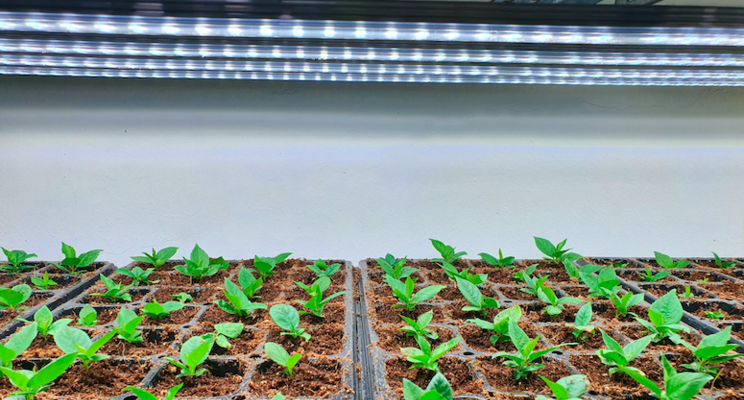The importance of DLI and light quality
Added on 14 November 2021

Different plants require a different amount of light throughout the day for healthy crop production. High-light crops, such as tomatoes, peppers, and cucumbers require a high Daily Light Integral (DLI). Both their quality and yield depend on them getting enough light throughout the day. In fact, tomatoes and peppers require a DLI of 22-30 moles per day to produce high-quality plants. Compare this to low-light crops like ferns that need only 6-10 moles per day.
What is DLI?
In a greenhouse environment, the natural light shining into your facility and the supplemental light you provide to plants in a 24-hour day make up the total daily light integral. It encompasses the light within PAR (Photosynthetically Active Radiation), in the blue, green, and red range of the spectrum (400-700 nm), that plants use for photosynthesis.
Why is DLI Important?
DLI influences plant growth, development, yield, and quality. For example, DLI can influence the root and shoot growth of seedlings and cuttings, impact characteristics like branching, flower number, and stem thickness, as well as speed up or slow down production.
Different plant species have different light requirements at each stage of development. Keep in mind that since DLI is dependent on both photoperiod and intensity, when both light levels and day length are reduced during the winter period the DLI will decrease considerably. Under such conditions, supplemental lighting not only needs to be at the right intensity and photoperiod but also attention to light quality may be of importance to ensure that plant quality is achieved.
Importance of Light Quality
Light gives plants the energy they need for photosynthesis, which converts that light energy into sugars to fuel growth and development. In addition to the quantity (intensity) and duration (photoperiod) of light you provide to plants, the quality of the light (spectrum) is also important. Broad-spectrum LEDs are available that offer an extensive variety of wavelength combinations to meet specific growth goals. Such LEDs can be controlled to deliver the ideal light to suit the application, such as supplementing the natural light plants receive in a greenhouse or providing a balanced broad spectrum that replaces natural sunlight in a sole-source indoor growing environment.
The light spectra can also be tuned to individual crop needs. For example, blue light is associated with decreasing plant stretching, green light is known to reach further into the canopy and can prevent inner leaves from yellowing, red light is known to stimulate photosynthesis, while far-red is known to help promote growth and flowering. This is just a small sampling of what controlling and balancing the different wavelengths of light can achieve. To learn more, see our infographic.
Light Conditions in a Greenhouse
Light can be one of the most limiting factors for crops, and this is especially true for high-light crops in a greenhouse, where seasonal variations and limitations may inhibit crop productivity. During the winter months, natural light levels are often low, which means fewer hours of light combined with lower light intensities.
Click here to read more.
Photo created by wirestock - www.freepik.com
Source: Agritech Tomorrow
More news















